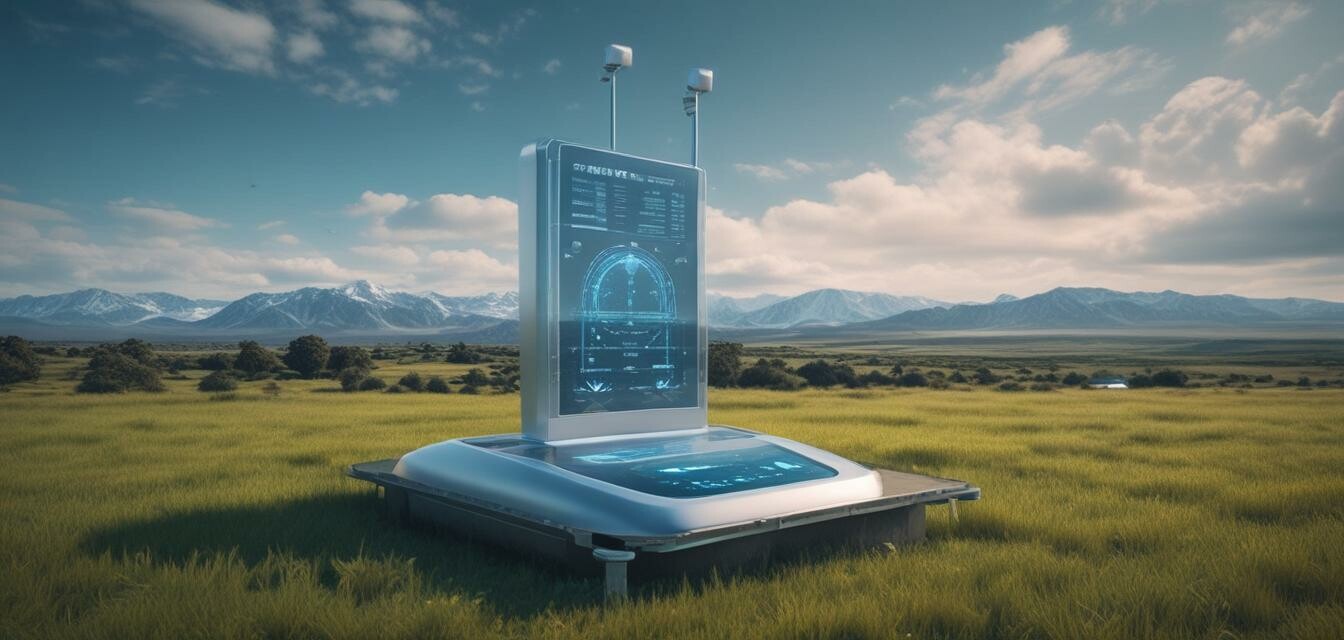
The Role of AI in Next-Gen Weather Stations
Key Takeaways
- Integration of AI enhances accuracy and timeliness of weather predictions.
- Smart algorithms analyze massive datasets for localized weather insights.
- Future weather stations will rely more on machine learning for improved forecasting.
- AI-powered tools are reshaping how weather data is collected and understood.
- Understanding AI's role in weather monitoring is crucial for tech-savvy consumers.
Artificial Intelligence (AI) is transforming the landscape of weather monitoring, making next-generation weather stations not only smarter but significantly more efficient. As technological advancements continue to evolve, it becomes essential to understand how AI integrates with these devices to provide more precise data and forecasting.
Understanding AI Integration in Weather Stations
AI integration in weather stations enables real-time data analysis, predicting weather patterns with groundbreaking precision. Let’s explore the various elements that AI adds to modern weather monitoring systems.
Data Collection and Processing
Traditional weather stations rely on basic sensors to collect data like temperature, humidity, wind speed, and precipitation. AI enhances this process by:
- Aggregating Data: AI can combine information from multiple sources, such as satellite imagery and other weather stations, allowing access to a broader dataset.
- Smart Analytics: AI algorithms analyze data, helping in recognizing patterns that human meteorologists might overlook.
| Traditional Weather Stations | AI-Enhanced Weather Stations |
|---|---|
| Basic data collection | Intelligent data aggregation and analysis |
| Fixed sensors | Dynamic and adaptive sensor networks |
| Manual updates | Automated real-time updates |
Improved Forecasting with AI
Forecasting is vital for planning daily activities, agricultural practices, and disaster management. Here’s how AI improves forecasting:
- Localized Forecasts: AI can provide granular weather forecasts tailored to specific regions or even neighborhoods.
- Predictive Modeling: Machine learning algorithms can model complex weather systems to foresee conditions more accurately.
- Continuous Learning: AI models improve over time using new data inputs, refining their predictions steadily.
Applications of AI in Weather Stations
The applications of AI in weather stations are numerous and impactful. Some key applications include:
- Smart Home Integration: AI-driven weather stations can communicate with smart home devices, optimizing home conditions based on real-time weather data.
- Climate Research: AI tools can analyze long-term climate trends, shaping future environmental policies and weather forecasting methods.
- Agricultural Monitoring: Farmers utilize AI-enhanced weather stations to optimize planting schedules and manage resources efficiently.
Emerging Trends in Weather Monitoring Technology
The integration of AI into weather stations has ushered in several emerging trends:
- Mobile Applications: Increased functionalities in mobile apps to provide users with personalized weather alerts based on AI insights.
- Integration with IoT: Connection to Internet of Things (IoT) devices for comprehensive monitoring of weather conditions and utilization of data.
- Enhanced User Experience: User-friendly interfaces that present complex data in easily digestible formats.
Future Prospects of AI in Weather Stations
The future holds exciting prospects for AI in weather monitoring:
- AI-Driven Innovations: We can expect significant improvements in accuracy and less human intervention in data processing.
- Global Weather Networks: Networking multiple AI-driven stations worldwide can create a comprehensive global weather picture.
- Democratization of Data: Making advanced weather data accessible to individuals, helping them make informed decisions.
Tips for Weather Station Enthusiasts
- Stay abreast of the latest features and models that incorporate AI technology.
- Engage with communities or forums sharing insights on AI applications in weather stations.
- Consider versatile models that allow integrations with other smart home devices.
Conclusion
The role of AI in next-generation weather stations cannot be overstated. From enhanced data collection and processing to improved forecasting, AI is reshaping how we understand and interact with the weather. As we rely more on these technologies, staying informed about emerging trends and improvements in AI applications will be crucial for both enthusiasts and professionals alike.
Learn more about related technologies
Explore our other blog categories that cover valuable information regarding weather station gadgets:
- Buying Guides - Ensure that you make informed choices when purchasing weather station gadgets.
- Barometers - Read on for insights into various barometer types and their uses.
- News and Trends - Stay updated with the latest developments in the weather technology sector.
- Wi-Fi Weather Stations - Discover features of the latest wireless weather stations available on the market.
- Tips and Tricks - Get practical advice to enhance your weather tracking experience.